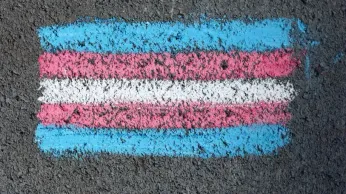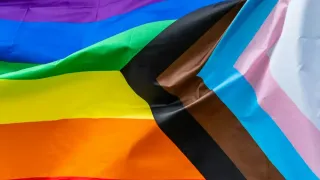
6 hours ago
Marking the Lives Lost: The History and Significance of Transgender Day of Remembrance
READ TIME: 3 MIN.
Transgender Day of Remembrance was established in 1999 to honor transgender people who have lost their lives due to anti-transgender violence and hate. The annual observance takes place on November 20 and was created by transgender advocate Gwendolyn Ann Smith, in response to the 1998 murder of Rita Hester, a Black transgender woman in Allston, Massachusetts. Smith, along with activists Nancy Nangeroni and Jahaira DeAlto, sought to memorialize not only Hester but also others whose deaths were often overlooked or forgotten by the public and even within LGBTQ+ communities .
The first TDoR was marked by vigils in Boston and San Francisco, cities linked to the deaths of Rita Hester and Chanelle Pickett, another Black transgender woman murdered in Massachusetts in 1995. These gatherings were intended both as acts of mourning and as public demonstrations against the violence and systemic neglect faced by transgender communities .
Rita Hester’s murder on November 28, 1998, was a galvanizing event. Hester was found stabbed in her apartment, and despite an outpouring of grief and a public vigil attended by hundreds, her case remains unsolved . The lack of resolution, combined with minimal media coverage and a pattern of misgendering and erasure, drew attention to the recurring invisibility and vulnerability of transgender individuals—particularly transgender women of color—when it came to violence and its aftermath.
Gwendolyn Ann Smith, moved by this loss and by the community’s struggle to remember earlier victims such as Chanelle Pickett, launched the “Remembering Our Dead” web project. This initiative cataloged the names and stories of transgender people lost to violence, serving as both a memorial and a call to action .
Since its inception, TDoR has grown into a global event, observed in hundreds of cities across the United States and internationally. Annual vigils typically feature the reading of names of those lost to anti-transgender violence in the preceding year, moments of silence, and speeches or artistic performances that call for justice and celebrate resilience .
The day serves multiple purposes: it is a memorial, an act of resistance, and a tool for public education. Its observance draws attention to hate crimes against transgender people, emphasizes the urgent need for social change, and gives transgender communities and allies a platform to express collective grief and solidarity . Many events also highlight the disproportionate impact of violence on transgender women of color, who face heightened risks due to the intersection of racism, sexism, and transphobia.
TDoR has become an annual moment of visibility for transgender issues, influencing policy and advocacy efforts. In many communities, the day has spurred greater collaboration between LGBTQ+ organizations, human rights groups, and local officials. For example, in Cleveland, Ohio, a coalition of organizations including TransFamily of Cleveland, Equality Ohio, and the ACLU of Cleveland have organized annual observances since at least 2005, often highlighting local victims and integrating educational programming alongside commemorations .
Despite growing recognition, the violence that sparked TDoR’s creation remains an urgent reality. Reports continue to document rising rates of fatal violence against transgender people, especially Black and Latina transgender women, and persistent underreporting or misreporting by authorities and media. The observance has adapted over time—some groups now use the day to also highlight stories of survival and resilience, as with the “Transgender Day of Resilience” initiative, which complements remembrance with a focus on hope and the strength of living transgender communities .
TDoR’s legacy is visible in the ongoing efforts to expand legal protections, improve media representation, and foster cultural change for transgender people. The day remains a solemn yet empowering reminder of the need to honor those lost, support survivors, and strive for a world where all transgender people can live safely and authentically.






